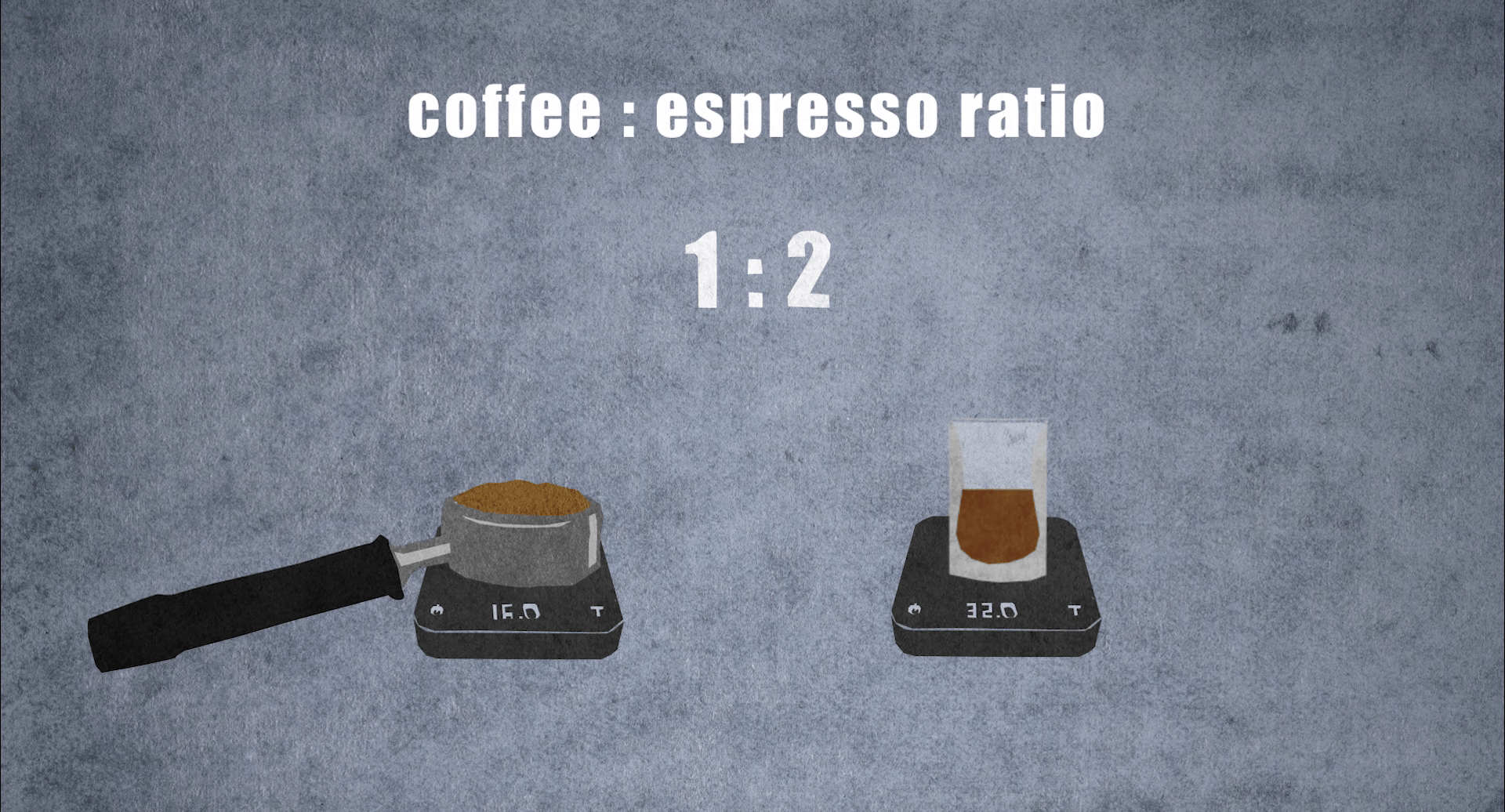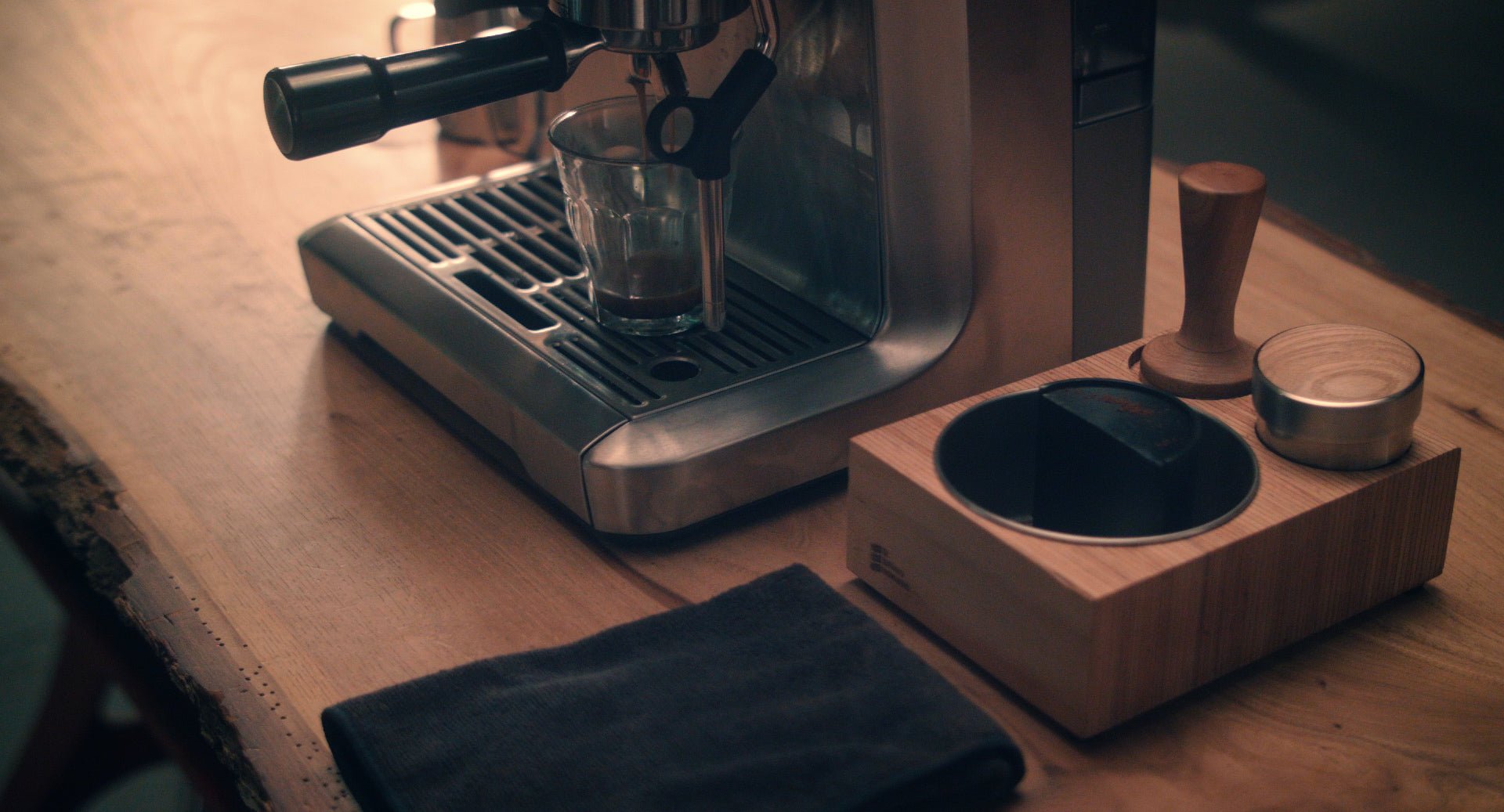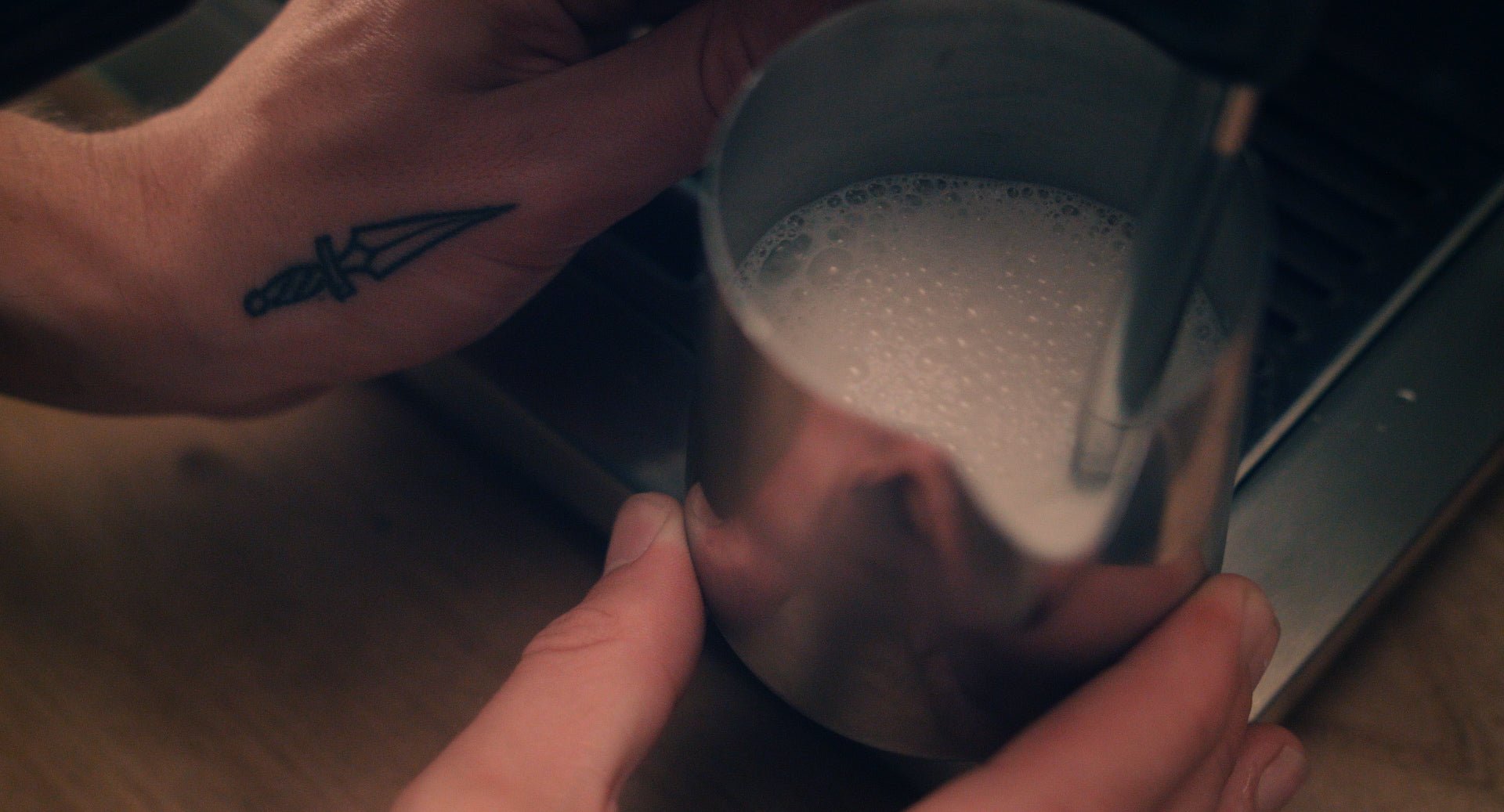
Espresso Dosing & Extraction
Espresso Dosing & Extraction
How coffee extraction works:
Before dialing in espresso it is important to note, at a base level, that Coffee dissolves acidity first, sugars second, and bitters third. These three compounds are important to balance when brewing coffee.
- Espresso is especially sensitive to these three balancing compounds because it extracts under high pressure, accelerating the process, allowing only a short window of time to hit your mark. It’s an enjoyable challenge that has enthralled baristas since espresso’s beginnings and is difficult to master.
Three basic levers of control:
1. Grind
Without controversy, grind is the most important element. Without a consistent grind, nothing else you do will be able to correct how your coffee extracts. You cannot dose, distribute, tamp or pull your way out of a bad grind.
- Using a burr grinder is key for a consistent grind size when making espresso. You cannot use a chop grinder and achieve the needed grind consistency
- Chopping your beans with a tiny spinning blade will leave you with messy variables within your grind, causing your coffee to extract poorly; over-extracting the finer grounds and under extracting the coarser grounds.
- Dial in the SAI Millwright Hand Grinder for the perfect espresso grind.
2. Dose
Your dose is how much ground coffee you put in your portafilter basket before distributing and tamping.
- It is important to Dose by the volumetric standard of your portafilter basket.
- After Dosing, evenly distribute your grounds with the SAI BT distribution tool, and tamp uniformly with the SAI New Levy tool.
3. Time/Yield
The longer the time, the higher the yield.
- Time relays how long espresso is in contact with water while extracting the balancing compounds of the coffee
- Yield relays the flow of water through your coffee, measuring how much espresso you end up with.
- Flow isn’t often talked about, but is an important aspect of extraction.
- Controlling the flow of water through your coffee is the entire purpose of grinding, dosing, distributing, and tamping correctly. It is also why your machine puts out 9 bars of pressure, uses a distributing screen above the coffee, and a multitude of tiny drainage holes in the bottom the basket. Without proper flow, you will not achieve the proper extraction, ruining your coffee.
- Your time and yield are the most flexible levers of control, depending on how intense you want your espresso. However, there are other factors to keep in mind when wanting to change your espresso’s intensity. Grind size is the hinge that determines how flexible you can be with your time and yield.
- In order to balance out your extraction, it is helpful to think of your time and yield as if they are on opposite ends of a balancing scale.
- To achieve a balanced extraction with a high yield (lungo), you would want the shot to pull quickly with a coarser grind. This is how you achieve a less intense balanced espresso (such as a 1:3 ratio).
- To achieve a balanced extraction with a low yield (Ristretto), you would want the shot to pull for a longer time with a finer grind. This is how you achieve a more intense ratio, such as a 1:1.
- Proper balance of Time and Yield
- High yield demands Low time.
- Low yield demand High time
Dosing
Choosing the right dose can be tricky. Each coffee may vary in weight based on density. Lighter roasted coffees tend to be more dense than darker roasted coffees, and coffee density may also vary based on the region it was farmed.
Density matters when setting the dose because a coffee with a higher density weighs more by volume. This means you shouldn’t dose coffee with high density the same by weight as you would one with lower density. Some coffees occupy more volume by weight in your basket than others even when ground exactly the same way. So it is important to dose your coffee according to the volume your basket was designed for.
First, dose your coffee by the volume it occupies in your basket. Before being distributed, your coffee should hill up about a half inch above your basket. Then, After being distributed and Tamped, the coffee should flatten out to be about a quarter of an inch below the rim of the basket. This will allow the coffee to expand just enough for the water to flow consistently and extract evenly.
If the bed of coffee sits too shallow in your portafilter basket, the coffee will have too much room to expand, causing the water to rapidly flow around your espresso rather than through it evenly. Conversely, if the bed is set too high, the coffee wouldn’t have enough room to expand, forcing the water to fracture the puck and channel for an uneven extraction.
Visual signs that your espresso is channeling or extracting incorrectly is when you see it squirting through the bottom of your basket, flowing in bursts, or blonde-ing pre-maturely rather than striping in an even/progressive flow down the center.
Once your dose is set, weigh it using a scale, then set every consequent dose to match for a consistent recipe moving forward.
Our recipe for the sake of this training will be a 1:2 ratio with a 16g dose and a 32g yield to match the Breville portafilter standard.
Dialing in Espresso:
1. Pull a shot
2. Dose (16g), Tamp, and pull a 1:2 ratio shot (32g yield).
3. Monitor the time it took to achieve a 32g yield.
- We are hoping to achieve a 1:2 ratio in 30 seconds by the end of this training as a baseline.
4. Taste the shot
- If your shot looks watery and thin, tasting sharp/sour; the water hasn’t had enough time to dissolve the balancing compounds within the coffee. So, the most dominant taste will be sourness.
- Don’t get confused between acidity and sourness. Think how a ripe green apple is sweet and acidic, while an unripe green apple is sour, lacking sweetness. An under-extracted coffee will taste sharp/sour, lacking sweetness like an unripe apple.
- To increase sweetness you may want to start by fining up your grind, which will in turn increase the amount of time it requires to achieve the original 1:2 ratio goal. A finer grind will expose more of the coffee’s surface area to contact water, increasing extraction and bringing you one step closer to the sweet spot.
- exceptions:
- If you have no control over the amount of time your shot pulls (like many home espresso machines) Decreasing the size of your grind may not be the best option.
- Some home machines struggle to put out enough pressure to compensate for a really fine grind. If your machine isn’t yielding enough espresso, causing it to be under-extracted, sour, and unpleasant. You need to coarsen up your grind to compensate for your machine’s inability to achieve the proper yield for the recipe.
- It is helpful to think of your grind like the difference between grades of sand. Really fine sand will make it more difficult for water to flow, while coarse sand or gravel will allow water to flow with ease. Changing your grind size has a similar effect.
- A coarse grind will allow water to flow rapidly, increasing your yield, but decreasing the amount of extraction by ratio of that yield. While a finer grind is restrictive to water flow, decreasing the yield, while increasing extraction by ratio of that yield.
- If you have full control over; grind, dose, and time; Grinding finer may be the right move to achieve the sweet spot. Be cautious not to make too drastic of grind changes, and in turn, over extract your coffee.
- Over-extracted coffee tastes bitter/sour/dirty/muted. It dries out your mouth, leaving you with the feeling on ashy residue in the back of your throat.
The Sweet spot
You want to land close to the middle of the three major compounds. The sweet spot is where the sugars are the dominant aspect of the espresso shot. However, don’t dismiss the importance of acidity and bitters. They are what give your coffee it’s unique attributes. The sweet spot is a perfect balance of acidity, sweetness, and bitters. This is where the complexity of espresso will leave you contemplating all the unique qualities of your coffee; where it was harvested, how it was processed, it’s intensity, sweetness, savoriness, mouth feel, and Aromatics. The blending of all these attributes are where you find tasting notes such as: florals, fruits, chocolates, spices, bitters, etc.
- Keep in mind; darker roasted coffees tend to have more solubility and dissolve more quickly than lighter roasted coffee. This means that the pull time varies a decent amount between roast grade. You could potentially pull a balanced shot of dark roast coffee around 22 seconds, and on the other end, a balanced shot of lighter roasted coffee around 40 seconds, depending on its solubility.
Espresso Intensity
The final aspect of your espresso is its level of intensity. You can adjust the intensity by increasing or decreasing the yield. As a reminder, our 1:2 ratio was the amount of coffee dosed at the beginning (16g), to the amount of espresso you yield at the end (32g).
A 1:1 ratio (16g:16g) will be quite intense, while a 1:3 ratio (16g:48g) will be less intense.
- To pull a 1:1 ratio, you would need a finer grind with an increased pull time in order to balance out the compounds of your coffee.
- To pull a 1:3 ratio, you would need a coarser grind with a decreased pull time in order to balance out the compounds of your coffee



